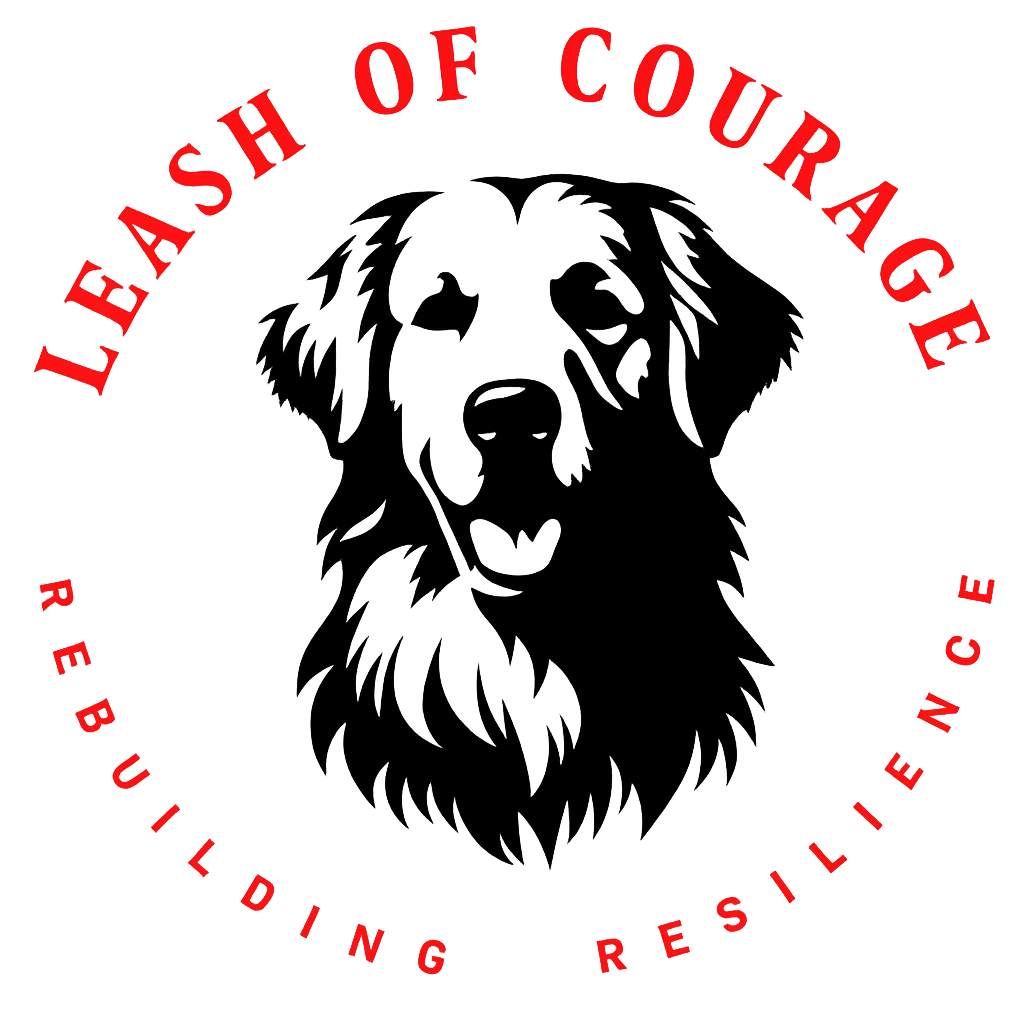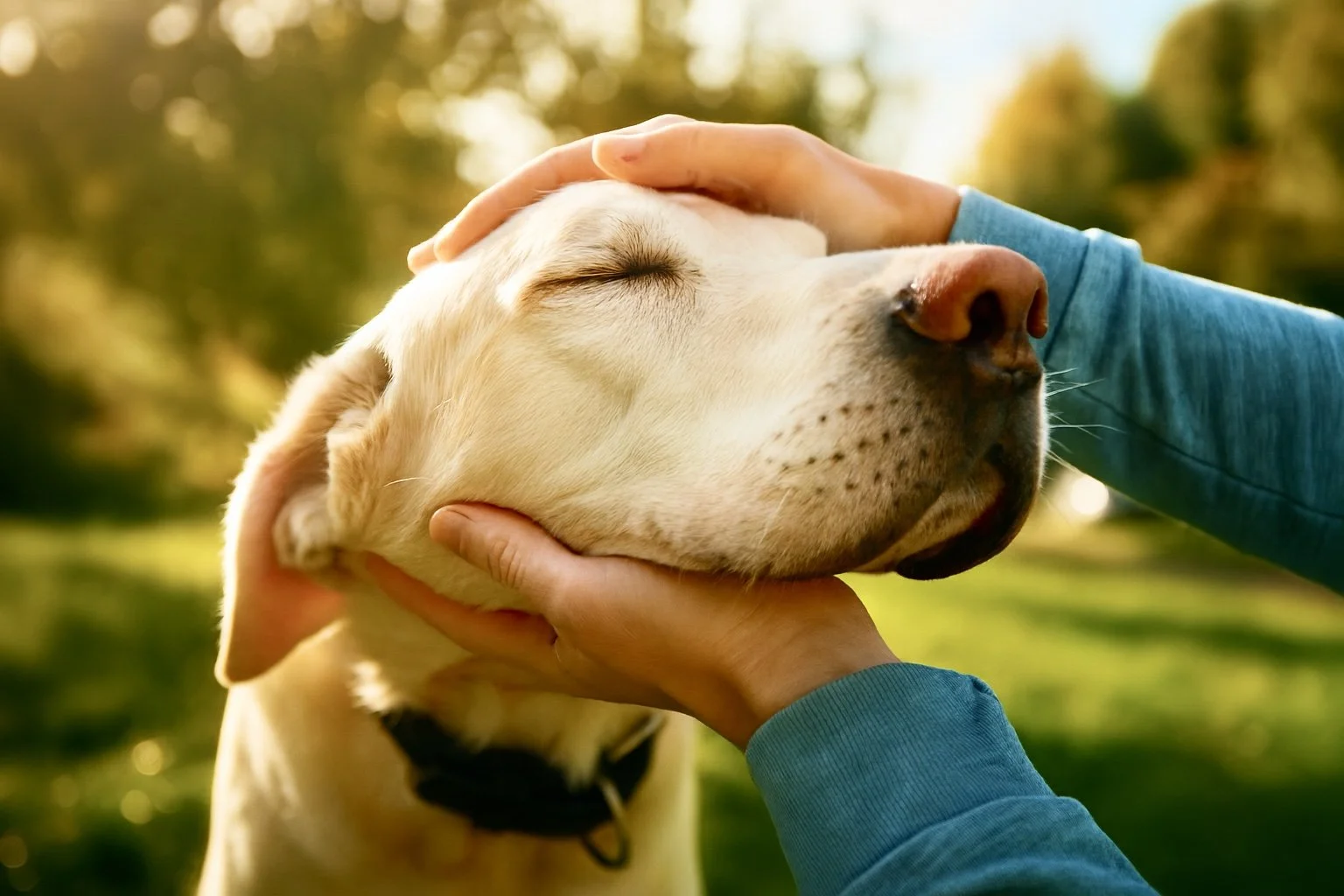The Neuroscience of Connection: How Dogs and Humans Bond Through Biology
Have you ever wondered why a dog’s wagging tail or excited homecoming routine cheers you up? Wonder no more because there’s strong research confirming that our bond with dogs runs deeper than affection…it’s hardwired into our biology. Through 30,000+ years of co-evolution, dogs have become remarkably attuned to humans-our behavior, our emotions and our physiological states. This connection is deeply rooted in biology, involving brain synchronization, hormone release, and even shared stress patterns. We are neurobiologically intertwined.
In 2019, following the back to back deaths of both my beloved companion dogs, I was overcome with grief. In a vulnerable moment, I admitted to a close friend that there were very few people whose death I would mourn more than those two dogs. Stunningly poignant and true. I am certain that I am not the only one who held, and holds, my dogs in such high esteem. Months later, I enrolled in a Master’s of Science degree program focusing on the human-canine bond. My goal was to discover the answer to this simple, but profound, question: Why are humans so connected to dogs? What follows are the highlights, rooted in current canine cognition research, of course.
-
Have you ever wondered why a dog’s wagging tail or excited homecoming routine cheers you up? Wonder no more because there’s strong research confirming that our bond with dogs runs deeper than affection…it’s hardwired into our biology. Through 30,000+ years of co-evolution, dogs have become remarkably attuned to humans-our behavior, our emotions and our physiological states. This connection is deeply rooted in biology, involving brain synchronization, hormone release, and even shared stress patterns. We are neurobiologically intertwined.
Sharing Neurochemicals
The science of human-animal bonding centers around the neurochemical oxytocin, often called the “love hormone.” Released during hugging, cuddling, and other forms of affection, oxytocin is well known for creating attachment between mothers and their infants. A 2015 study published in Science revealed an identical phenomenon: when dogs and their humans gazed into each other’s eyes, both experienced a surge of oxytocin (Nagasawa et al., 2015). This creates a positive feedback loop that strengthens the bond, much like the neurobiological attachment between parent and child. And the oxytocin-gaze positive loop is not just one-sided. Dogs benefit from this mutual hormonal exchange as it builds trust and deepens attachment from their viewpoint also. This may explain why simply looking at your dog can make you feel loved—because, on a chemical level, you are loved!
Heart Rate Synchronization
The amazing human-canine bond is more than hormonal—it’s also physiological. A 2024 study published in Scientific Reports reveals that when dogs and humans interact calmly, their heart rates often synchronize. Specifically, a dog’s heart rate variability (HRV)—a marker of stress and relaxation—adapted to match that of its owner during interaction (Koskela et al., 2024). This phenomenon, emotional co-modulation, suggests that dogs and humans may share emotional states. This has powerful implications. For people dealing with stress, trauma, or emotional dysregulation, dogs can act as anchors—regulating the nervous system through presence alone. Their biology resonates with ours.
Voice and Emotion Recognition
In a finding sure to delight many a dog lover, the brains of canines react to human voices in a very human-like way, according to a 2014 study. Dogs possess specialized brain areas, voice-sensitive regions, that are strikingly similar to human brains. These areas are actively involved in processing and recognizing human voices and their associated emotional content. A study using comparative fMRI scans found that emotionally charged sounds, especially positive tones, activate similar brain regions in both dogs and humans (Andics et al., 2014). In short, a dog, like a human, is capable of hearing words and perceiving emotional state. So when dog owners say that their dog understands them, they are “spot on.”
A functional application of this science in action is found in service dogs. Their seemingly uncanny ability to anticipate seizures or panic attacks is based on their ability to alert their handler to changes in voice tone, heart rate, and even breathing patterns. Dogs are sensitivity experts in detecting changes in established patterns because it is biologically built into their DNA.
Friends in Evolution
Over the millennia, dogs literally and figuratively walked beside us, co-evolving to read human cues with an accuracy unmatched in the animal kingdom. Scientists believe that humans selected for dogs that were more emotionally perceptive, a theory known as “Survival of the friendliest,” attributed to Brian Hare, an evolutionary anthropologist, in 2005. The dogs that were able to understand communicative gestures and in return communicate with humans, were more likely to be cared for, thus ensuring their survival. The friendly genetic traits were then passed on to successive generations. This evolutionary selection for friendliness has resulted in today’s dogs—the product of thousands of years of nurturing this social intelligence (Albuquerque & Resende, 2022). In fact, dogs outperform both wolves and even chimpanzees—our closest primate relatives—when it comes to understanding human social behavior (Hare & Tomasello, 2005).
Remarkable “Social Genius”
Emerging canine cognition research confirms that dogs have evolved not just to live with us, but to understand and synchronize with us, emotionally and biologically. The connection we feel with our dogs is neurobiological…through eye contact, voice, touch, and proximity, dogs and humans participate in an intricate dance of hormonal release, emotional attunement, and physiological synchronization. The science behind those puppy eyes confirms that dogs are genetically and socially tuned in to humans. We are on the same wavelength, so to speak, making them powerful sources of emotional healing. The bond we share with our dogs may be one of evolution’s most remarkable stories. It’s not just that we shaped them; they shaped us too.
References
1. Nagasawa, M., Mitsui, S., En, S., Ohtani, N., Ohta, M., Sakuma, Y., … & Kikusui, T. (2015). Oxytocin-gaze positive loop and the coevolution of human-dog bonds. Science, 348(6232), 333-336. https://doi.org/10.1126/science.1261022
2. Koskela, A., Törnqvist, H., Somppi, S., Vainio, O., & Vainio, M. (2024). Behavioral and emotional co-modulation during dog–owner interaction measured by heart rate variability and activity. Scientific Reports, 14, 25201. https://doi.org/10.1038/s41598-024-76831-x
3. Andics, A., Gácsi, M., Faragó, T., Kis, A., & Miklósi, Á. (2014). Voice-sensitive regions in the dog and human brain are revealed by comparative fMRI. Current Biology, 24(5), 574–578. https://doi.org/10.1016/j.cub.2014.01.058
4. Albuquerque, N., & Resende, B. (2022). Dogs functionally respond to and use emotional information from human expressions. Evolutionary Human Sciences, 5, e2. https://doi.org/10.1017/ehs.2022.57
5. Hare, B., & Tomasello, M. (2005). Human-like social skills in dogs? Trends in Cognitive Sciences, 9(9), 439–444. https://doi.org/10.1016/j.tics.2005.07.003
Healed by a Leash of Courage: Recovery Through the Power of the Human-Canine Bond
For over a decade, I battled the opioid crisis from two intimate vantage points: as a whistleblower exposing pharmaceutical fraud, and as a mother fighting to save my child from addiction. The price was steep—financial ruin, legal battles, personal grief—but healing came not from the justice system, or even therapy. It came through an ancient biological connection: the human-canine bond.
For over a decade, I battled the opioid crisis from two intimate vantage points: as a whistleblower exposing pharmaceutical fraud, and as a mother fighting to save my child from addiction. The price was steep—years of financial hardship, legal battles, personal grief—but healing came not from the justice system, or even therapy. It came through an ancient biological connection: the human-canine bond.
Whistleblower retaliation is often chronic, unrelenting, and psychologically corrosive. After losing my job, healthcare, and reputation, I found myself in a long tailspin of trauma. My child was in fragile recovery from opioid use disorder. Amid this storm, I lost both of my beloved dogs-my emotional anchors-within months of each other. And then, tragedy hit once more with its ferocious, unrelenting grip of pain—our adult son suddenly passed away following an unknown illness. The ultimate gut-wrenching loss. These deaths broke open a void—an emotional rupture that human interventions couldn’t reach. My world shrank into grief, hopelessness and isolation. I found myself teetering on the edge of despair…
-
As insidious thoughts of suicide crept in, I knew I had to act swiftly to stop the all-consuming anguish. In an act of instinctual self-preservation, I began volunteering at an organization training service dogs for veterans with PTSD. There, I witnessed the profound healing effects of dogs on the human nervous system: veterans found calm, re-engaged socially, and emotionally regulated simply through touch, gaze, and shared movement with their canine partners.
The science behind this transformation is robust. Studies show that when humans interact with dogs, both species release oxytocin—the hormone that enhances trust, bonding, and mood. At the same time, cortisol (the stress hormone) plummets. Heart rate variability improves. Even the amygdala, our brain’s most primal fear center, quiets.
This co-regulation is rooted in our 30,000-year evolutionary history with dogs. We are, in a sense, neurological allies. Eye contact with a dog activates the same brain pathways as gazing at an infant or loved one-the ‘interspecies oxytocin-mediated positive loop,’ may have supported the evolution of human-dog bonding. Our bond with dogs isn’t sentimental—it’s neurochemical, physiological, and restorative.
Inspired, I pursued a Master’s degree in human-canine interaction and later became a certified professional service dog trainer. On my 59th birthday, I received the gift of a lifetime, a magnificent Golden Retriever I would train as my own service dog. She healed me in ways that no courtroom or prescription could. As the veterans suffering from PTSD benefitted, so did I. My Golden’s calming presence gave me a sense of safety, helped reduce hypervigilance, and interrupt despair. Always beside me, her physical and emotional synchronization reminded me that I was not alone. She became my leash of courage.
Though my whistleblower case ultimately reached settlement, it brought neither justice nor closure. But my canine companion gave me something deeper: a reconnection to a meaningful life. We must recognize that for trauma survivors, dogs are not simply pets—they’re biological lifelines.
As our society grapples with epidemics of addiction, burnout, and institutional betrayal, perhaps the path to resilience lies not only in therapy and medicine, but in reawakening our bond with our longest and truest companions-dogs, who have evolved to walk alongside us and to heal with us.


